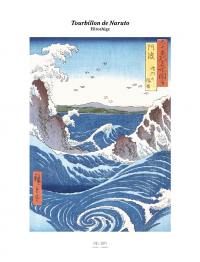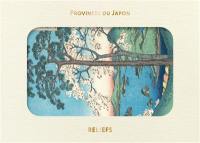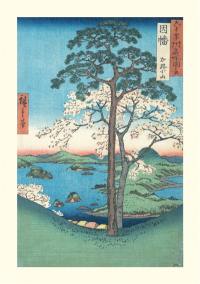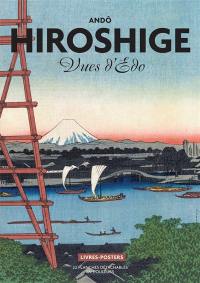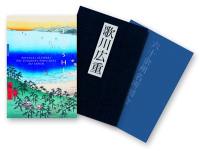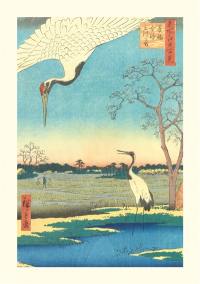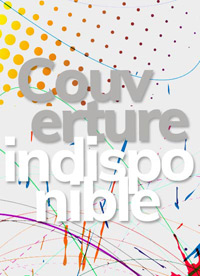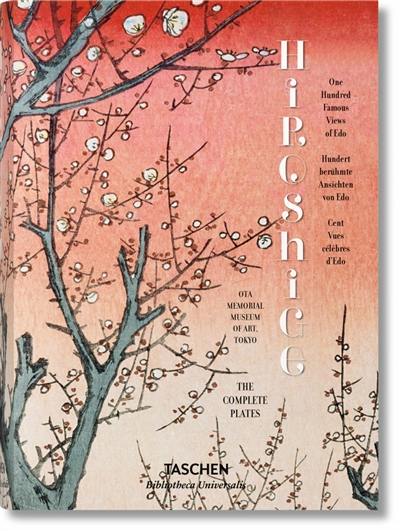
Fiche technique
Format : Relié sous jaquette
Nb de pages : 581 pages
Poids : 896 g
Dimensions : 15cm X 21cm
ISBN : 978-3-8365-5659-0
EAN : 9783836556590
One hundred famous views of Edo : Ota memorial museum of art, Tokyo
Quatrième de couverture
Utagawa Hiroshige (1797-1858) fut l'un des derniers artistes majeurs de la tradition de d'ukiyo-e, ce qui signiñe littéralement « images du monde flottant ». Ce genre artistique particulier a prospéré entre les XVIIe et XIXe siècles et a fini par caractériser la représentation visuelle que l'Occident se fait du Japon. Images de l'hédonisme sous bien des aspects, les scènes ukiyo-e dépeignaient souvent la vie et les attractions d'Edo (l'actuel Tokyo) : jolies femmes, acteurs, lutteurs, scènes de rue et paysages spectaculaires. Si Hiroshige a traité des sujets très divers, il était surtout connu pour ses paysages, notamment pour sa dernière série de chefs-d'oeuvre intitulée « Cent Vues célèbres d'Edo » (1856-1858) qui représentait différentes scènes de la ville au fil des saisons, des rues commerçantes animées aux sublimes cerisiers en fleurs.
Bibliotheca Universalis : la compilation culturelle indispensable qui rend hommage à l'éclectisme de l'univers Taschen à un prix imbattable ! Depuis nos débuts comme archéologues de la culture (c'était en 1980), le nom Taschen est rapidement devenu synonyme d'ouverture d'esprit et de publications accessibles à tous. Bibliotheca Universalis réunit dans un format soigné près de 100 titres Taschen parmi les plus populaires de tous les temps pour que vous puissiez constituer votre propre bibliothèque dédiée à l'art, à l'anthropologie et à l'érotisme. Un festin de livres : toujours délicieux, jamais indigeste !
City lights and cherry trees
Utagawa Hiroshige (1797-1858) was one of the last great artists in the ukiyo-e tradition. Literally meaning « pictures of the floating world, » ukiyo-e was a particular genre of art that flourished between the 17th and 19th centuries and came to characterize the Western world's visual idea of Japan. In many ways images of hedonism, ukiyo-e scenes often represented the bright lights and attractions of Edo (modern-day Tokyo) : beautiful women, actors and wrestlers, city life, and spectacular landscapes. Though he captured a variety of subjects, Hiroshige was most famous for landscapes, with a final masterpiece series known as « One Hundred Famous Views of Edo » (1856-1858), which depicted various scenes of the city through the seasons, from bustling shopping streets to splendid cherry orchards.
Bibliotheca Universalis - Compact cultural companions celebrating the eclectic Taschen universe at an unbeatable, democratic price ! Since we started our work as cultural archaeologists in 1980, the name Taschen has become synonymous with accessible, open-minded publishing. Bibliotheca Universalis brings together nearly 100 of our all-time favorite titles in a neat new format so you can curate your own affordable library of art, anthropology, and aphrodisia. Bookworm's delight - never bore, always excite !
Utagawa Hiroshige (1797-1858) war einer der letzten grobêtaen Künstler der Ukiyoe-Tradition. Ukiyoe bedeutet wörtlich « Bilder der fliebêtaenden Welt » und bezeichnet die berühmte Kunstgattung des japanischen Holzschnitts, die im 17. Jahrhundert entstand und die bildliche Darstellung Japans in der westlichen Welt bis heute prägt. Traditionell zeigte sie schöne Frauen, Kabuki-Theaterdarsteller, Vergnügungsszenen, das Stadtleben und Landschaften. Obwohl Hiroshige eine Vielfalt an Motiven wählte, lag seine gröbêtate Begabung in der Darstellung von Szenen aus seiner Heimatstadt Edo, dem heutigen Tokio. Sein Meisterwerk war die Serie, die unter dem Namen « Hundert berühmte Ansichten von Edo » (1856-1858) bekannt wurde und in der er die unterschiedlichen Gesichter der Stadt abbildet - von quirligen Einkaufsstrabêtaen bis zu den berühmten Kirschbäumen.
Bibliotheca Universalis - kompakte Kulturbegleiter zum unschlagbaren Jubiläumspreis ! 35 Jahre Taschen, 35 Jahre erschwingliche, hochwertige und mitunter tollkühne Publikationen. Stellen Sie nun aus fast 100 unserer Lieblingstitel, die wir anlässlich des Jubiläums in einem neuen Format auflegen, Ihre eigene Bibliothek zu Kunst, Kultur und Körperkult zusammen. Taschen - für den smarten Buchwurm !






